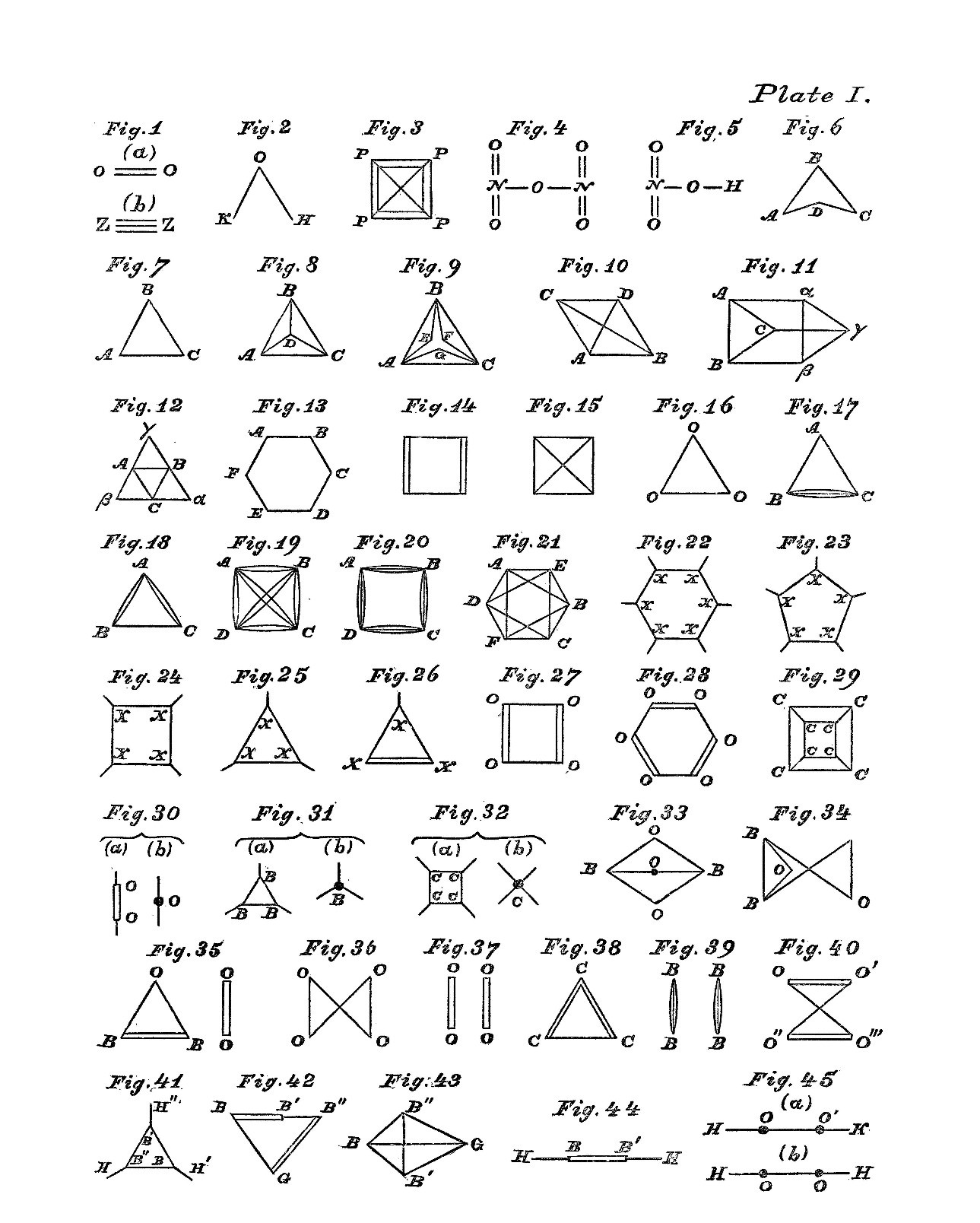John Carlos Baez on Nostr: Seeking Sylvester's 1878 paper on chemistry and invariant theory, I stumbled across ...
Seeking Sylvester's 1878 paper on chemistry and invariant theory, I stumbled across this on Vicipædia. That's right: the *Latin* Wikipedia! Don't ask me why.
Then I found his actual paper here:
https://www.jstor.org/stable/pdf/2369436.pdfSylvester sure liked to write. For example:
"The more I study Dr. Frankland's wonderfully beautiful little treatise the more deeply I become impressed with the harmony or homology (I might call it, rather than analogy) which exists between the chemical and algebraical theories. In travelling my eye up and down the illustrated pages of "the Notes," I feel as Aladdin might have done in walking in the garden where every tree was laden with precious stones, or as Caspar Hauser when first brought out of his dark cellar to contemplate the glittering heavens on a starry night. There is an untold treasure of hoarded algebraical wealth potentially contained in the results achieved by the patient and long continued labor of our unconscious and unsuspected chemical fellow-workers."
But what did Sylvester actually do?
First he noticed that you can use graphs to describe molecules: vertices are atoms and edges are bonds. Nothing very new there. Then he noticed you can also use graphs to describe ways of building scalars from tensors: a vertex with n edges coming out is a tensor with n indices, and an edge means you sum over a repeated index, as in the 'Einstein summation convention'. This idea is often attributed to Penrose, who explained it more clearly much later.
Later still this became the math of 'string diagrams', popular in category theory.
Based on this, Sylvester tried to reduce chemistry to invariant theory. The idea has lots of problems, but it's a lot of fun!

Published at
2023-03-26 17:21:19Event JSON
{
"id": "a56cecc39e682dbce64624237c0c56f23ed41ab66ab13b80176b86859e742bba",
"pubkey": "f7346eb283902ada9d21c109a93e83128d9f87d8fcfe70ad819b3bf2ad9bce16",
"created_at": 1679851279,
"kind": 1,
"tags": [
[
"mostr",
"https://mathstodon.xyz/users/johncarlosbaez/statuses/110090733435476319"
]
],
"content": "Seeking Sylvester's 1878 paper on chemistry and invariant theory, I stumbled across this on Vicipædia. That's right: the *Latin* Wikipedia! Don't ask me why.\n\nThen I found his actual paper here:\n\nhttps://www.jstor.org/stable/pdf/2369436.pdf\n\nSylvester sure liked to write. For example:\n\n\"The more I study Dr. Frankland's wonderfully beautiful little treatise the more deeply I become impressed with the harmony or homology (I might call it, rather than analogy) which exists between the chemical and algebraical theories. In travelling my eye up and down the illustrated pages of \"the Notes,\" I feel as Aladdin might have done in walking in the garden where every tree was laden with precious stones, or as Caspar Hauser when first brought out of his dark cellar to contemplate the glittering heavens on a starry night. There is an untold treasure of hoarded algebraical wealth potentially contained in the results achieved by the patient and long continued labor of our unconscious and unsuspected chemical fellow-workers.\"\n\nBut what did Sylvester actually do? \n\nFirst he noticed that you can use graphs to describe molecules: vertices are atoms and edges are bonds. Nothing very new there. Then he noticed you can also use graphs to describe ways of building scalars from tensors: a vertex with n edges coming out is a tensor with n indices, and an edge means you sum over a repeated index, as in the 'Einstein summation convention'. This idea is often attributed to Penrose, who explained it more clearly much later. \n\nLater still this became the math of 'string diagrams', popular in category theory.\n\nBased on this, Sylvester tried to reduce chemistry to invariant theory. The idea has lots of problems, but it's a lot of fun!\n\nhttps://media.mathstodon.xyz/media_attachments/files/110/090/628/647/138/204/original/ef0adc7025b3414e.jpeg",
"sig": "b9554991afb35ac764804bae286a4ecc6c01a158e141972703d315e2fe3834adef6fc861046ecfb1a98b2f7395c122e1f0c2e2e0560d4b23bc1f88a6c24899c8"
}
